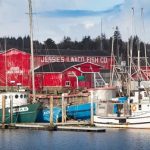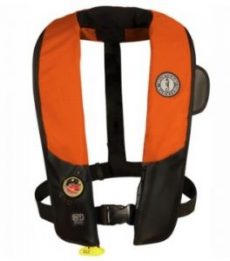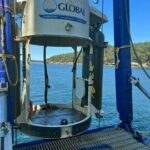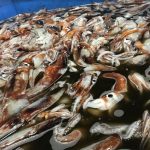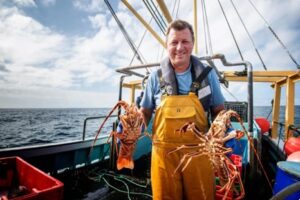You don’t see shrimp trawlers working the sea like you once did. You don’t see them coming in with their photogenic outriggers up. To be clear, trawlers still work the sea but nowhere in numbers like they once did.,, Times were you’d see them out at sea working, nets out, capturing shrimp. Beachgoers would see several trawlers with nets up coming home with a haul. Beachgoers and locals alike knew where to get fresh-caught shrimp and it was no marketing spin. It was the real deal, but those days are slipping away. Regulations, pollution, imports, inaccessible shrimping grounds, mariculture, maintenance costs, aging fleets, and other factors have put the hurt on the shrimping industry. >click to read< 07:36
Tag Archives: pollution
Cocaine sharks: The hidden drug problem in the Gulf of Maine and oceans
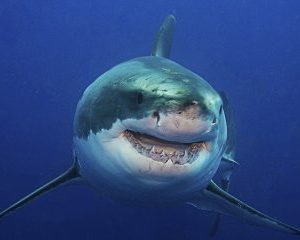 An article on the BBC and subsequently picked up by the New York Times just reinforced what I have been teaching for a long time. The article reports on a finding from the Oswaldo Cruz Foundation, which found high levels of cocaine in 13 Brazilian sharp-nosed sharks tested near Rio de Janeiro. So, how did the drugs get into the livers and muscles of the sharks? I can think of three possibilities. First, illegal drug labs might be discharging wastewater into the harbor. Second, sharks could have ingested floating cocaine packets dumped to evade authorities. Lastly, and most likely, local sewage discharge might be releasing large quantities of urine from drug users. more, >>CLICK TO READ<< 08:12
An article on the BBC and subsequently picked up by the New York Times just reinforced what I have been teaching for a long time. The article reports on a finding from the Oswaldo Cruz Foundation, which found high levels of cocaine in 13 Brazilian sharp-nosed sharks tested near Rio de Janeiro. So, how did the drugs get into the livers and muscles of the sharks? I can think of three possibilities. First, illegal drug labs might be discharging wastewater into the harbor. Second, sharks could have ingested floating cocaine packets dumped to evade authorities. Lastly, and most likely, local sewage discharge might be releasing large quantities of urine from drug users. more, >>CLICK TO READ<< 08:12
William R. Miller: Why don’t we restore commercial fishing in Erie?
 There are two kinds of jobs, those that “create wealth” by bringing money into the region from outside the region and those jobs that “circulate wealth” within the region. Fish we take from the lake, crops that we grow, minerals that we extract from the ground, products that we manufacture, retirees we convince to live here, services provided to outside individuals and organizations, and tourists who we attract, all create wealth for the region. Each wealth-creation job typically supports about three wealth-circulating job in the region. We’ll focus here on one potential source for wealth-creating jobs. In 1890, Erie was the largest, in tonnage, freshwater fishing port in the entire world. Today, my understanding is that Erie is down to one commercial fisherman and the Canadian Great Lakes fishing industry is now about a $1 billion industry. What happened? >click to read< 15:45
There are two kinds of jobs, those that “create wealth” by bringing money into the region from outside the region and those jobs that “circulate wealth” within the region. Fish we take from the lake, crops that we grow, minerals that we extract from the ground, products that we manufacture, retirees we convince to live here, services provided to outside individuals and organizations, and tourists who we attract, all create wealth for the region. Each wealth-creation job typically supports about three wealth-circulating job in the region. We’ll focus here on one potential source for wealth-creating jobs. In 1890, Erie was the largest, in tonnage, freshwater fishing port in the entire world. Today, my understanding is that Erie is down to one commercial fisherman and the Canadian Great Lakes fishing industry is now about a $1 billion industry. What happened? >click to read< 15:45

The Clean Water Act, passed into law 50 years ago, has fallen well short of its goals
Nearly half of the rivers and streams across the U.S. are considered too polluted to meet quality standards for swimming, recreation, aquatic life, fish consumption or as drinking water sources. The Environmental Integrity Project, a nonpartisan nonprofit formed by former Environmental Protection Agency attorneys, published a report that found alarming results of water quality tests in all 50 states. More than 700,000 miles of waterways, about 51 percent of assessed river and stream miles, are impaired by pollution. That’s in addition to another 55 percent of lake acres and 26 percent of estuary miles. >click to read< 16:49
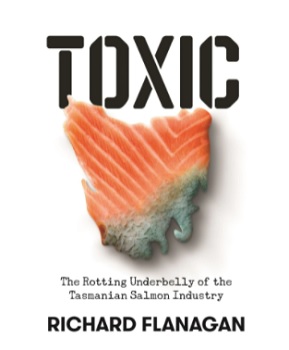
Tasmanian fish farms wreck pristine wilderness area’s, producing a toxic product we believe healthy
Enlightenment is dawning, but very slowly.,,, The latest shock is the discovery that a staple of the Australian diet, fresh salmon, is not as healthy as we hoped, but terribly polluted. We are told it is rich in essential fatty acids like Omega-3, anti-oxidants, vitamins and minerals. But there is something fishy about this succulent, pink delicacy. Most salmon consumed here is non-native Atlantic salmon, farmed in the warming waters off Tasmania, and a Tasmanian has lifted the lid on the can of worms. Novelist Richard Flanagan’s latest book, Toxic, subtitled The Rotting Underbelly of the Tasmanian Salmon Industry, leaves a nasty taste but makes compelling reading. >click to read< 13:03
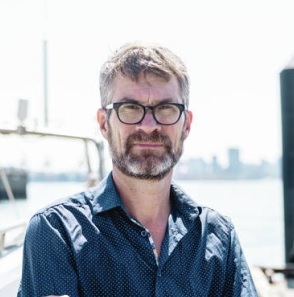
British Columbia: Pollution expert aims to create ‘water champions’
Peter Ross, an internationally recognized expert in water pollution, looks out over the sparkling waters of Burrard Inlet and sees something others do not. Invisible chemicals tend to be out of sight and out of mind, says Ross. But they leach into watercourses and into the marine food chain, creating “an invisible crisis.” “There are 500,000 chemicals on the global marketplace,” he said. Many of those will surreptitiously make their way into the food chain. Salmon heading up the Fraser River are also “basically running a gauntlet,” said Ross, “past wastewater treatment plants, past farms, past pulp mills, past refineries and storm drains.” Pollution is also an issue in drinking water,>click to read< – A global problem? 6PPD quinone: The environmental contaminant killing Coho salmon-An everyday chemical has been found to be highly toxic. Contamination of waterways is responsible for what had been the unexplained mass deaths of Coho salmon. We take a look at 6-PPD quinone, >click to read<14:39
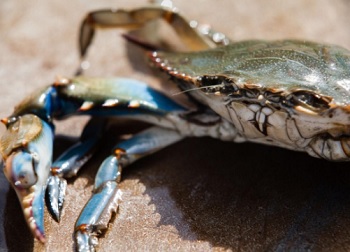
‘Forever chemicals’ found in Chesapeake seafood and Maryland drinking water
More testing has found so-called “forever chemicals” in a striped bass, blue crab and oyster from the Chesapeake Bay,,, Eleven different PFAS compounds were also detected in tap water sampled from three homes in Montgomery County,,, PFAS are a group of more than 8,000 chemical compounds used in nonstick cookware, flame retardants, water-repellant and stain-resistant clothing and furniture, as well as in fire-fighting foams used at airports and military bases. They do not break down in the environment. They also spread easily through water and can build up in animals or organisms that ingest them, including people. >click to read< 18:04
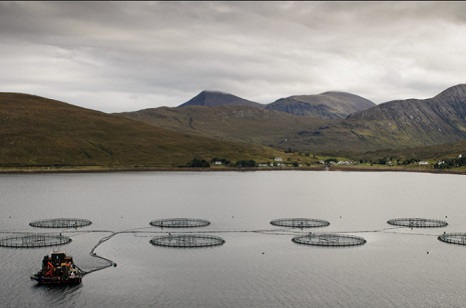
Fury as fish farm pesticide pollution rises 72% in a year
Pollution of Scotland’s lochs from a toxic fish farm pesticide has leapt 72 per cent in a year, according to data from the Scottish Environment Protection Agency (Sepa). Levels of azamethiphos discharged by 76 caged fish farms around the coast increased from 166 kilograms in 2018 to 286 kilograms in 2019. The chemical is known to kill marine wildlife. At the same time emissions of another toxic pesticide, emamectin, from 109 fish farms, rose 26 per cent. Sepa has been trying to limit its use since 2016 because of the dangers it poses to crabs, lobsters and other crustaceans. >click to read< 18:59

WTF?!!! A mile wide toxic waste site sits on the ocean floor near Stellwagen Bank
About 19 miles east of Boston Harbor, beside a national marine sanctuary that’s home to one of the world’s richest fishing grounds, lies one of the nation’s largest offshore dumping sites of radioactive waste.,,, David Wiley, the sanctuary’s research coordinator, led a seminal study of the area in the early 1990s. His report, which found that the federal government kept few records of what was dumped there, estimated that there could be as many as 80,000 barrels of toxic waste, most from hospitals, universities, and companies throughout the region. At least 4,000 of them were thought to contain radioactive waste, from the same sources >click to read< 09:11

It’s time to kill the Gulf dead zone, as Gulf Shrimpers fight for their livelihoods
Anyone who has followed this issue over the three decades or so it has been studied knows progress has been slow. They also know Louisiana, though it bears the lion’s share of environmental and economic harm,,, >click to read< Gulf shrimpers fight for their livelihoods in a fertilizer-fueled dead zone – Dean Blanchard Seafood, headquartered on the barrier island of Grand Isle in the Mississippi River Delta, is one of the largest shrimp suppliers in the United States. >click to read< 11:32

Brenda Sterling-Goodwin: Diluting waste in Northumberland Strait not the answer for Northern Pulp effluent
“The solution to pollution is dilution. It is very logical that if a chemical is bothering you, you should increase the flow,,, In many cases, people were probably taught that it is OK to pour your waste materials down the sink (and let dilution take care of any nasty effects). However, despite its frequent promotion, dilution is probably not the solution.,,, A pipe in the Northumberland Strait is not the answer. It may be one of the less costly solutions for waste disposal at Northern Pulp, but one must think of the environmental consequences. >click to read< 09:21
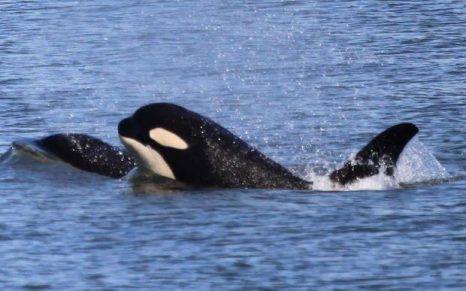
The ‘Soul’ of the Pacific Northwest is dying of starvation
“I believe we have orcas in our soul in this state.” Those were the words of Washington Gov. Jay Inslee earlier this year after forming the Southern Resident Orca Task Force, an initiative meant to keep endangered killer whales alive in the region. Scientists point to a number of factors for the dwindling number of orcas in the region, including pollution, both old and new sources, that accumulate in their primary prey, Chinook salmon. This pollution gets stored in the orca’s fatty tissues, suppressing their immune system and making the whales more susceptible to disease… “It’s an ecosystem-wide problem,” Hanson said. “Things are out of whack and we have to get them back to where we can sustain killer whales. And the clock is ticking.” >click to read<18:00
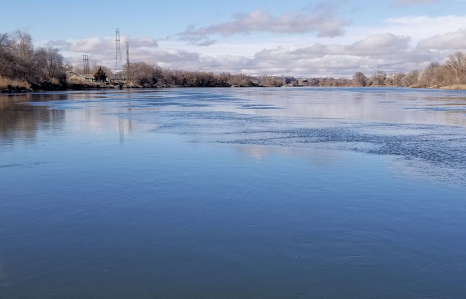
Wastewater worries
On Tuesday, the Ontario City Council voted to have City Manager Adam Brown send a returning letter to Oregon’s Department of Environmental Quality. The letter will outline major concerns with a draft sent to the city by the department for review and comment of National Pollutant Discharge Elimination System permit. The permit would allow the city to discharge wastewater into the Snake River, with new limits and pollutant monitoring six months out of the year.,, Among top concerns are the exorbitant costs to upgrade existing wastewater treatment facilities,,, Arsenic, along with copper and mercury are bioaccumulative toxins that aggregate in fish tissue,,, >click to read< 18:50
New record of whale strandings along coast
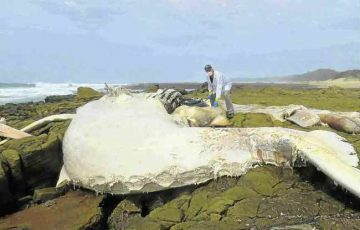 While East Londoners have been enjoying a bumper season of whale sightings over the past few weeks, a fourth humpback whale in less than a month has beached and died along the East London coastline. East London Museum principal scientist Kevin Cole said the strandings were a new record for his cetacean database. Yesterday, Cole examined the badly decomposed carcass of the fourth dead humpback on the rocks west of Chintsa West.,,, He said a number of factors could be responsible for the strandings including old age, pollution, ship strikes and the effects of seismic blasting to explore for gas and oil offshore. click here to read the story 11:34
While East Londoners have been enjoying a bumper season of whale sightings over the past few weeks, a fourth humpback whale in less than a month has beached and died along the East London coastline. East London Museum principal scientist Kevin Cole said the strandings were a new record for his cetacean database. Yesterday, Cole examined the badly decomposed carcass of the fourth dead humpback on the rocks west of Chintsa West.,,, He said a number of factors could be responsible for the strandings including old age, pollution, ship strikes and the effects of seismic blasting to explore for gas and oil offshore. click here to read the story 11:34
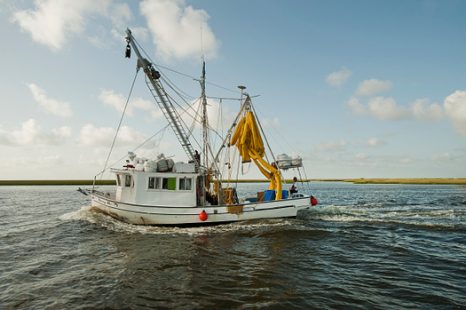
What goes in the water in Wisconsin comes out in the Gulf of Mexico
A group of farmers in southwestern Wisconsin’s Driftless Area has become acutely aware that what gets into the watershed here can wind up hundreds of miles away. These farmers use conservation practices to keep nutrients on their land and out of lakes and streams. Margaret Krome, policy program director at the Michael Fields Agricultural Institute, says nutrients that get into the water here follow a direct path down the Mississippi River. “Those nutrients go shooshing right out into the Gulf of Mexico and create a zone with such high nutrients that they end up with a big algal bloom, and that sucks all the oxygen out of the water and kills other organisms,” she explains. “So it’s a dead zone because fishermen can’t fish there.” The Wisconsin farmers have developed a relationship with Gulf fishermen, who are appreciative of the farmers’ efforts to help improve fishing conditions in the Gulf. click here to read the story 10:52

Florida’s building boom threatens wildlife-rich lagoon
The most biologically diverse waterway in America is seriously ill. The Indian River Lagoon is repeatedly being choked with oxygen-robbing algae, its surface increasingly dotted with thousands of dead fish, manatees, birds and other creatures. The culprits: farm runoff and a huge influx of people that has sent lawn fertilizer and other pollutants into the lagoon, which runs 156 miles along Florida’s Atlantic Coast, almost to Palm Beach, and includes the Cape Canaveral area. “It’s the death by a thousand cuts,” said Bob Knight, an environmental scientist with the Howard T. Odum Florida Springs Institute who has studied Florida’s waters for 40 years. The lagoon’s woes threaten the region’s $2.5 billion recreation, fishing and tourism economy, alarming kayak tour operators, charter boat captains, restaurateurs and organizers of bird-watching festivals. click here to read the story 19:48
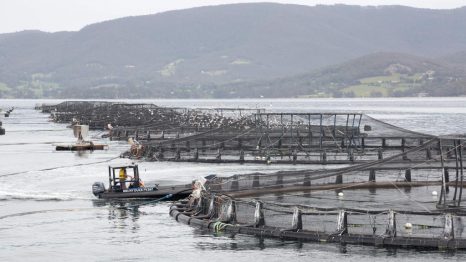
Meanwhile, in Tasmania – Drag fish farm regulation into 21st century
Sea based fish farms dump tonnes of faeces into the water. Think of them as a large toilet that does not flush. I cannot think of an industry in Tasmania other than aquaculture that is allowed to dump an unlimited amount of pollution in our waterways. Not only is there no limit on the amount of faeces salmon farms can dump in coastal waters, Tasmania also lacks science-based regulations to determine which parts of our coastline are suitable for salmon farms. International research shows that if you put fish farms in bays and harbours, where the water is shallow and current speed is low, fish faeces accumulates under cages, killing everything below them. Nitrogen discharged into the water column creates risk of harmful algal blooms, like the types we have seen worsening with increased salmon farms in the Huon and D’Entrecasteaux Channel. Other countries have responded to this research by offering incentives to move farming onshore. Read the story here 12:46

River Herring spawn in NY tributary for 1st time in 85 years
A few days after a long-abandoned industrial dam was removed from the mouth of a Hudson River tributary this spring, hundreds of river herring swarmed up into the shallow waters to spawn for the first time in 85 years. The removal of the rusted steel dam on the Wynants Kill near Albany was the first of what ecologists hope will be many barriers removed in Hudson tributaries to restore spawning habitat for herring and other ocean-going species that have been devastated by habitat loss, pollution and overfishing. “There are more than 1,500 dams in the Hudson estuary watershed, most of them no longer in use,” said Frances Dunwell, coordinator of the state Department of Environmental Conservation’s Hudson River Estuary Program. “One of the key items on our to-do list by 2020 is to remove as many of these barriers as possible.” Read the rest here 12:01
Pollution may have killed hundreds of fish in Cockburn Sound: Scientist
 A leading WA scientist says pollution may have killed more than 700 fish in Cockburn Sound, south of Perth. Over a four-day period from November 19-22, officers from the Department of Fisheries plucked hundreds of different species of fish from in and around the sound after getting a tip-off from anglers. The sound is a popular fishing spot with more than 12,000 boaties using the water each year. It is also used for commercial fishing with close to 130 different species of fish in the sheltered water body. Read the article here 15:15
A leading WA scientist says pollution may have killed more than 700 fish in Cockburn Sound, south of Perth. Over a four-day period from November 19-22, officers from the Department of Fisheries plucked hundreds of different species of fish from in and around the sound after getting a tip-off from anglers. The sound is a popular fishing spot with more than 12,000 boaties using the water each year. It is also used for commercial fishing with close to 130 different species of fish in the sheltered water body. Read the article here 15:15
Toxic road runoff kills adult coho salmon in hours, study finds
 A new study shows that stormwater runoff from urban roadways is so toxic to coho salmon that it can kill adult fish in as little as 2½ hours. Scientists have long suspected that the mixture of oil, heavy metals and grime that washes off highways and roads can be poisonous to coho, but the study is the first to prove it. In some place, like Longfellow Creek in West Seattle’s Delridge area, up to 90 percent of females were killed. “It was apparent that something coming out of those pipes was causing it,” Spromberg said. Read the rest here 22:21
A new study shows that stormwater runoff from urban roadways is so toxic to coho salmon that it can kill adult fish in as little as 2½ hours. Scientists have long suspected that the mixture of oil, heavy metals and grime that washes off highways and roads can be poisonous to coho, but the study is the first to prove it. In some place, like Longfellow Creek in West Seattle’s Delridge area, up to 90 percent of females were killed. “It was apparent that something coming out of those pipes was causing it,” Spromberg said. Read the rest here 22:21
Roger Frate of Darien has a simple answer to improving the lobster stock in Long Island Sound.
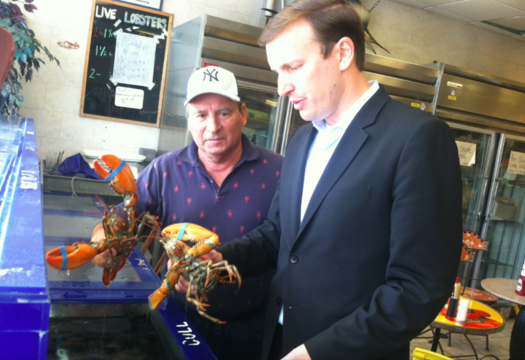 Frate said it was pesticide used to combat the West Nile Virus in 1998 and 1999 that decimated the Sound’s lobster population and sent it into a tailspin from which it has yet to recover. Connecticut banned the use of some pesticides, but New York hasn’t, he said. But Carlo said he’s noticed a rebound in the number of lobsters. “The lobsters right now are looking nice and healthy,” he said. “There’s been a huge improvement since 2012.” However, Frate said fishermen still believe pesticides are harming lobsters. Read the rest here 12:20
Frate said it was pesticide used to combat the West Nile Virus in 1998 and 1999 that decimated the Sound’s lobster population and sent it into a tailspin from which it has yet to recover. Connecticut banned the use of some pesticides, but New York hasn’t, he said. But Carlo said he’s noticed a rebound in the number of lobsters. “The lobsters right now are looking nice and healthy,” he said. “There’s been a huge improvement since 2012.” However, Frate said fishermen still believe pesticides are harming lobsters. Read the rest here 12:20
Pollution harms fishermen’s livelihoods
 Waste pollution from sewage and mushrooming informal settlements, plus constant harassment from law enforcers has harmed subsistence fishermen in recent years, a study has revealed. Among their key findings was that there was significant environmental deterioration in the condition of the beaches. A multinational Durban oil refinery was identified as a major source of pollution (mainly chemicals /oil), often discharged into the Isipingo River. Pollution is killing our global fisheries. Where are the phony activists? Read the rest here 22:18
Waste pollution from sewage and mushrooming informal settlements, plus constant harassment from law enforcers has harmed subsistence fishermen in recent years, a study has revealed. Among their key findings was that there was significant environmental deterioration in the condition of the beaches. A multinational Durban oil refinery was identified as a major source of pollution (mainly chemicals /oil), often discharged into the Isipingo River. Pollution is killing our global fisheries. Where are the phony activists? Read the rest here 22:18
Dan Bacher: 2010 article warned: MLPA Initiative will do nothing to stop a big oil spill
 I wrote the following article in 2010 warning of the consequences of not protecting the ocean from oil spills, oil drilling, pollution and all human impacts other than fishing and gathering in the “marine protected areas” created under the. This article warned of the consequences of allowing a Big Oil lobbyist and other corporate operatives to oversee “marine protection” in California. Read the rest here 19:59 (photo)
I wrote the following article in 2010 warning of the consequences of not protecting the ocean from oil spills, oil drilling, pollution and all human impacts other than fishing and gathering in the “marine protected areas” created under the. This article warned of the consequences of allowing a Big Oil lobbyist and other corporate operatives to oversee “marine protection” in California. Read the rest here 19:59 (photo)
CLIMATE, POLLUTION, AND OVERFISHING
 It seems that at least every 5 years I’ve got to return to the dispute of overfishing vs. other factors responsible for depleted fish populations. I surely wrote about it on this page in 2002, 2007 and 2012. Now, with a feeling of déjà vu, I’m back at it.,, The trigger was a letter sent to me by my friend Cormac Burke in which a British Fisherman Skipper (ret) M W Jackson wrote to Fishing News. Mr. Jackson was complaining of the lack of judgment in which the general press distributed misinformation by conservationists who are self proclaimed experts,,, Read the rest here 09:17
It seems that at least every 5 years I’ve got to return to the dispute of overfishing vs. other factors responsible for depleted fish populations. I surely wrote about it on this page in 2002, 2007 and 2012. Now, with a feeling of déjà vu, I’m back at it.,, The trigger was a letter sent to me by my friend Cormac Burke in which a British Fisherman Skipper (ret) M W Jackson wrote to Fishing News. Mr. Jackson was complaining of the lack of judgment in which the general press distributed misinformation by conservationists who are self proclaimed experts,,, Read the rest here 09:17
Microplastic pollution discovered in St. Lawrence River sediments
 Previously undocumented in North American rivers, concentrations of microplastic particles in the St. Lawrence are as high as has been observed in the world’s most contaminated marine sediments. Owing to their small size and buoyancy, they may readily pass through sewage treatment plants. Read the rest here 08:18
Previously undocumented in North American rivers, concentrations of microplastic particles in the St. Lawrence are as high as has been observed in the world’s most contaminated marine sediments. Owing to their small size and buoyancy, they may readily pass through sewage treatment plants. Read the rest here 08:18
Dick Pinney’s Guidelines: New Hampshire’s Great Bay’s natural resources declining
 THIS COLUMN is a copy of a report about the decline of the Great Bay natural resources that has happened over the span of my 76 years of living and loving Great Bay,,, “Anyone that doubts the harmful effects of the millions of gallons of sewerage that is released into the Great Bay watershed by the many municipalities has to have their head buried in the heavily polluted sand and muck around the shorelines.” Read the rest here click for larger image 16:40
THIS COLUMN is a copy of a report about the decline of the Great Bay natural resources that has happened over the span of my 76 years of living and loving Great Bay,,, “Anyone that doubts the harmful effects of the millions of gallons of sewerage that is released into the Great Bay watershed by the many municipalities has to have their head buried in the heavily polluted sand and muck around the shorelines.” Read the rest here click for larger image 16:40
Study highlights threats to Southern Resident killer whales
 A NOAA report released on June 25, 2014, which focused on 10 years of research and conservation efforts on the endangered Southern Resident killer whales, confirms that the three major threats to the recovery of the animals are pollution, vessel noise and food availability. Chinook salmon make up a majority of the whales’ diet, Many runs of Chinook are endangered or threatened,, Pollution? Read the rest here 09:16
A NOAA report released on June 25, 2014, which focused on 10 years of research and conservation efforts on the endangered Southern Resident killer whales, confirms that the three major threats to the recovery of the animals are pollution, vessel noise and food availability. Chinook salmon make up a majority of the whales’ diet, Many runs of Chinook are endangered or threatened,, Pollution? Read the rest here 09:16






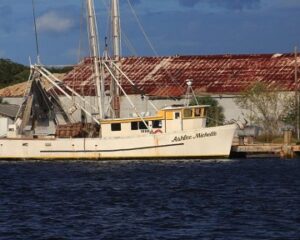
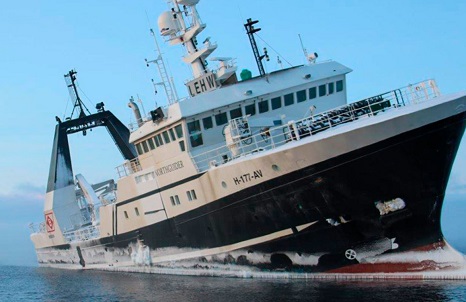
 Thousands of dead bunker fish and hundreds of diamondback turtles washed ashore last May in Peconic Bay on the east end of Long Island, New York. Fed by warming waters and a stream of nitrogen, a foul bloom of algae had so depleted the estuary of oxygen that marine life suffocated. The waters of the bay swirled red and brown. Basic septic units are not designed to remove nitrogen. When too many households with septic are clustered too densely, nitrogen levels spike. Converted into ammonium in the tank and then nitrate in the soil, nitrogen seeps into groundwater and ends up in rivers, lakes, and bays, where it feeds a menagerie of algae species.
Thousands of dead bunker fish and hundreds of diamondback turtles washed ashore last May in Peconic Bay on the east end of Long Island, New York. Fed by warming waters and a stream of nitrogen, a foul bloom of algae had so depleted the estuary of oxygen that marine life suffocated. The waters of the bay swirled red and brown. Basic septic units are not designed to remove nitrogen. When too many households with septic are clustered too densely, nitrogen levels spike. Converted into ammonium in the tank and then nitrate in the soil, nitrogen seeps into groundwater and ends up in rivers, lakes, and bays, where it feeds a menagerie of algae species.  A comprehensive study of a major California estuary has documented the links between nutrient runoff from coastal land use, the health of the estuary as a nursery for young fish, and the abundance of fish in an offshore commercial fishery. The study, published the week of June 8, 2015, in Proceedings of the National Academy of Sciences, focused on Elkhorn Slough and Monterey Bay on California’s central coast. ” is nitrogen, whether it comes from an agricultural field or sewage or urban runoff.
A comprehensive study of a major California estuary has documented the links between nutrient runoff from coastal land use, the health of the estuary as a nursery for young fish, and the abundance of fish in an offshore commercial fishery. The study, published the week of June 8, 2015, in Proceedings of the National Academy of Sciences, focused on Elkhorn Slough and Monterey Bay on California’s central coast. ” is nitrogen, whether it comes from an agricultural field or sewage or urban runoff. 



























